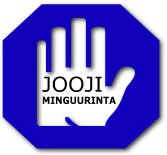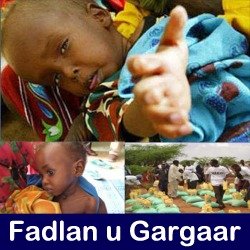February 4, 2014, Nairobi/Washington – Successive seasons of near to above average rainfall in most parts of Somalia, low food prices and continued humanitarian response have brought down the number of people requiring urgent, lifesaving humanitarian assistance from its peak of 4 million during the 2011 famine. However, the latest assessment findings indicate that the number of people requiring humanitarian assistance has shown no further improvement since August 2013,exacerbated by a below average harvest, conflict, floods, and a tropical cyclone. Acute malnutrition persists, with tens of thousands of children facing increased risk of death, especially in the country’s south.
An estimated 857,000 people will be in Crisis and Emergency (IPC Phases 3 and 4) requiring urgent humanitarian assistance between now and June according to a joint assessment by the Food Security and Nutrition Analysis Unit for Somalia (FSNAU), a project managed by UN’s Food and Agriculture Organization (FAO), and the Famine Early Warning Systems Network (FEWS NET), a project funded by the United States Agency for International Development (USAID), and other partners. The recent figures represent an 18 percent decline since January 2013, but this is a mere 1.5 percent decline since August 2013. The positive impact of increased livestock prices, increasing livestock herd sizes, improved milk availability, low prices of both local and imported staple food commodities, higher purchasing power from labor income and livestock sales as well as sustained humanitarian interventions over the last six months was undermined by a Deyr 2013 cereal harvest in January/February estimated to be 20 percent below the long-term and five-year averages.
 The food security condition of over 2 million additional people remains fragile and is classified as Stressed (IPC Phase 2). This group of households may struggle to meet their own minimal food requirements through mid-2014, and they remain highly vulnerable to shocks that could push them back to food security crisis.
The food security condition of over 2 million additional people remains fragile and is classified as Stressed (IPC Phase 2). This group of households may struggle to meet their own minimal food requirements through mid-2014, and they remain highly vulnerable to shocks that could push them back to food security crisis.
Acute Malnutrition
Levels of acute malnutrition remain Critical (Global Acute Malnutrition rates exceeding 15%) among rural populations in many parts of South-Central Somalia and among Internally Displaced Persons (IDPs). Nutrition survey results indicate that an estimated 203,000 children under the age of 5 are acutely malnourished. This figure includes 51,000 children that are severely malnourished and consequently face a higher risk of death. A majority of the malnourished children are found among non-IDP populations of the South. Assessment results indicate that morbidity, poor child feeding and care practices are among the main casual factors of malnutrition in Somalia.
The current number of acutely malnourished children is only slightly down (by 1.5%) from the 206,000 malnourished children under the age of five estimated for August 2013. However, the number of children under the age of five that are severely malnourished has increased from 45,000 in August 2013 to 51,000 in January 2014 (an increase of 13%).
Lifesaving humanitarian assistance and livelihood support remain vitally important between now and June 2014 to help food insecure populations meet their immediate food needs. Additional interventions will be required to protect livelihoods and build the resilience of communities against future shocks.
Areas of Concern
IDPs continue to constitute a majority (74%) of the 857,000 people in Crisis and Emergency (IPC Phases 3 and 4). The challenge faced by IDPs includes reliance on marginal and oftenunreliable livelihood strategies and poor living and sanitary conditions. Populations experiencing acute food security crisis (IPC Phases 3 &4) are also found in large numbers in rural and urban areas in Sanaag, Sool, Bari, Nugaal, North and South Mudug, Galgaduud, Hiran, and Middle Shabelle as well as Middle and Lower Juba regions. In South-Central Somalia primarily, other areas that have had repeated food security crises in recent year and that have persistently high levels of acute malnutrition remain of concern.
[1]The Integrated Food SecurityPhase Classification (IPC) is a set of analytical tools, and processes, to analyze and classify the severity of a food security situation according toscientific international standards into a five-point scale: IPC Phase 1=Minimal; Phase 2=Stressed; Phase 3=Crisis; Phase 4=Emergency; and Phase 5=Famine.
CONTACTS: Frank Nyakairu, FAO Communications Officer Email: Frank.Nyakairu@fao.org, Tel: +254 786 399311 or visit www.fsnau.org or Erin Martin
Erin Martin, Tel: +1 646 552 9566 Email: emartin@fews.net




































comment closed after 30 days / Jawaabaha waa la xiray ama waa la joojiyay wixii ka badan 30 cisho.